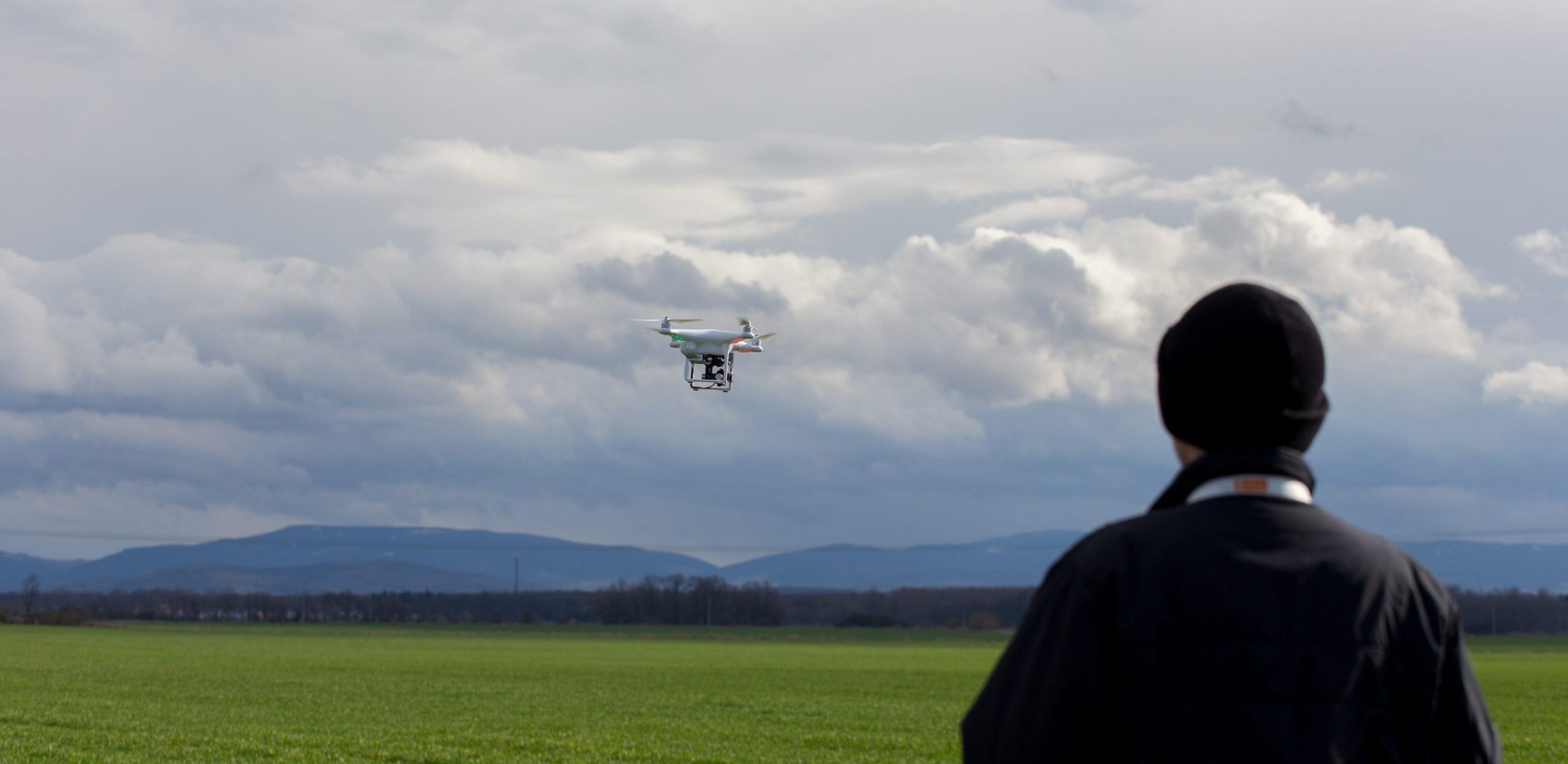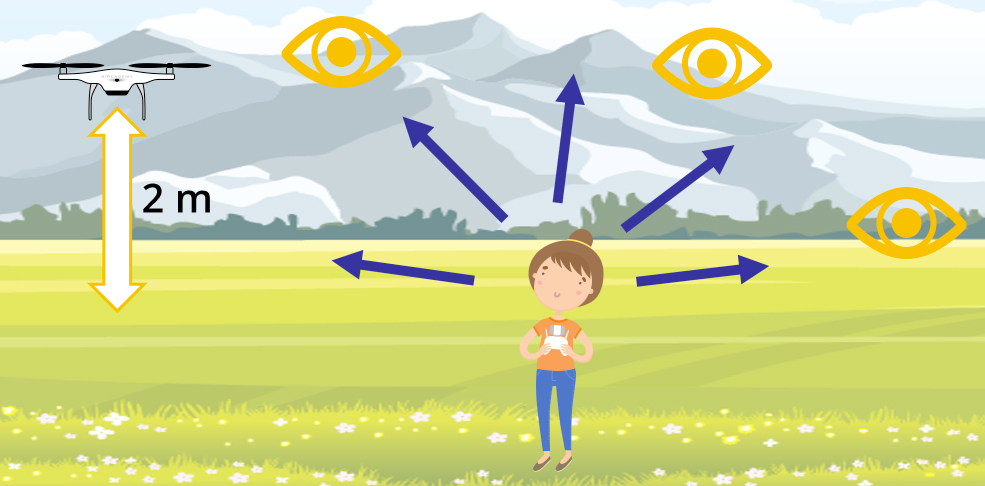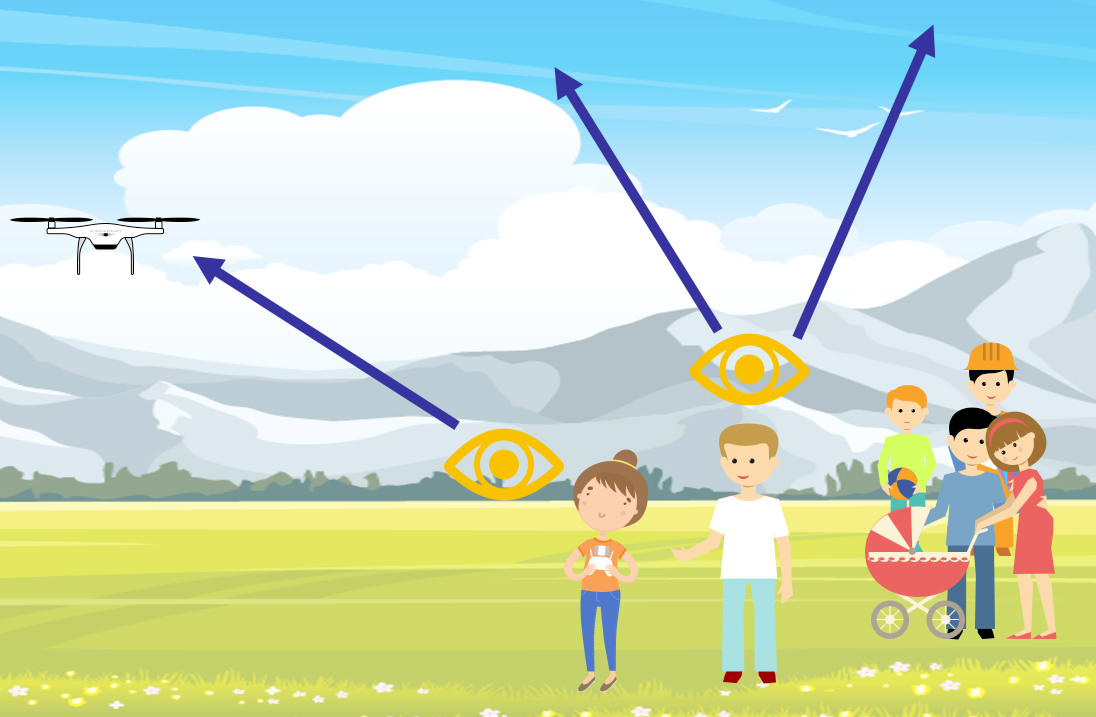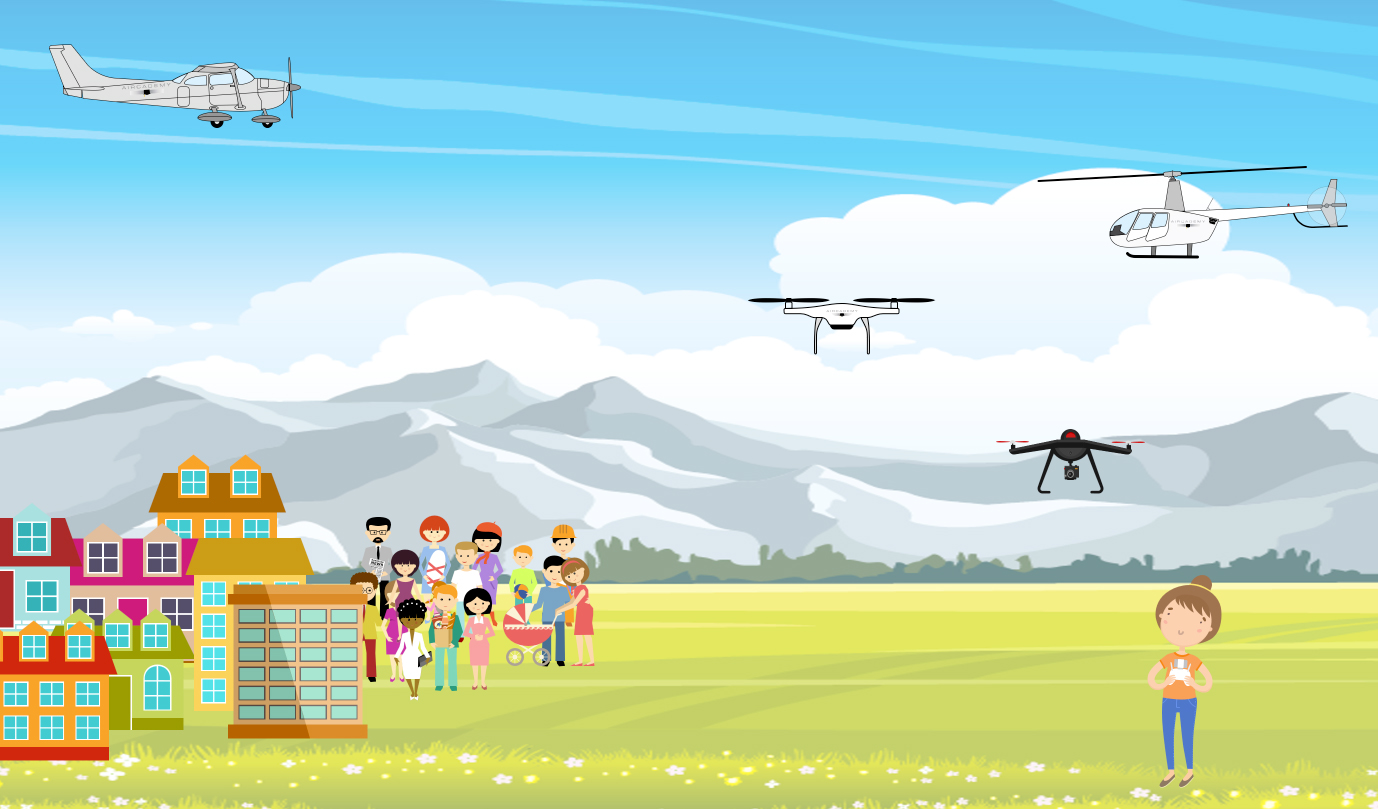Flight Monitoring and Debriefing

Throughout the flight it is important to follow certain procedures so as not to forget any important in-flight checks. Constantly scan the airspace around you and keep an eye on the battery level of the UAS. Having someone else to help you with this can be a great relief.
This sub-chapter deals with the following topics:
- departure procedures
- standard procedures and common risks
- debriefing, including documentation.
Departure Procedures
Once you have successfully completed all preparations and pre-flight checklists, the UAS can take off safely.
Take a last look at the airspace and your surroundings on the ground. When everything is safe, you can start the unmanned aircraft.
It is best to carry out checks in the following order:
- remote control
- the UAS
- other equipment.
When choosing the take-off area, make sure the ground is flat. If the terrain is very uneven, use a platform (launchpad) for take-off and landing. In the case of a UAS with wings, make sure that the take-off and landing runway is sufficiently long and level without any obstacles in the immediate vicinity.
Once at a safe altitude, it is advisable to test all functions of the remote control as well as the proper functioning of the payload, telemetry and control.
If you have set your transmitter to the wrong flight mode, you can still correct it at this stage. However, if the UAS is further away, you may have difficulties returning it. Once everything is working properly, you can fly the UAS to the designated location.

Standard Procedures
Two things should be checked regularly during the flight:
- the battery level and
- the condition of the UAS.
The battery’s discharge curve follows a predictable path: initially, the battery discharges very quickly, followed by a period of lower discharge and finally another period of faster discharge.
During the period of lower discharge, you risk a false sense of security and can let the UAS fly too far away before finding that the charge level drops again quickly. Therefore, the battery level should be checked at least once a minute during flight.
Land the UAS with sufficient time left over and never calculate in such a way that the battery is almost completely empty towards the end of the flight.
You should also keep an eye on the UAS itself and suppress the tendency to stare at the remote-control display for long periods of time; if something happens to your UAS, you risk not knowing where it is. In addition, the unmanned aircraft could fly into an object without your knowledge.
Furthermore, do not rely solely on internal collision avoidance systems as obstacles can easily be overlooked by this; for example, a wire from a high-voltage line.
Observation of the airspace during the flight is very important because manned aircraft often fly at a higher speed and thus lack the time to detect UAS effectively.
For this reason, professional UAS operators always work in teams of two: one keeps an eye on the UAS while the other monitors the payload, the airspace and the environment. Although it is not required by law in the OPEN category, it is recommended.
The remote pilot can often be distracted by people passing by and speaking to them. Since you should keep an eye on the UAS, monitor the battery level and check the airspace and payload, you probably do NOT have time for a casual chat. Be firm and tell onlookers that you are busy and will speak to them once the UAS lands.
If you are in a two-person team, one can chat with spectators while the other concentrates on flying.

Moreover, make sure that you do not exceed an altitude of 120 m above the take-off point.
Common Risks
When operating an unmanned aircraft, you can distinguish between two main risk areas that require special consideration when planning and executing a flight: the air risk and the ground risk.

The ground risk consists mainly of the impact of an unmanned aircraft on people or objects on the ground. Initial statistics have shown that most of these crashes are due to technical equipment failures. Accordingly, flying over people or sensitive areas should be avoided as far as possible, even if this would be permitted under the regulations.
Meanwhile, air risk is a collision with other airspace users: for example, with an aeroplane or helicopter. In order to minimise this risk, you should maintain visual contact with the UAS at all times and carefully observe the airspace around you.
Low-flying police and ambulance helicopters pose the greatest risk, so you should not fly your UAS near an accident, riot or fire.
As soon as you recognise the approach of another aircraft, keep a safe distance and land your UAS if necessary. If the unmanned aircraft becomes a risk to other people, immediately abort the flight and return safely to the landing site.
Debriefing
After landing, the flight is not over; instead, further steps must be carried out as part of a debriefing process.
Regardless of regular maintenance, you should inspect your UAS for damage or soiling every time you return from a flight. This includes, in particular, the propellers and batteries. In this way, you can immediately recognise even minimal damage and arrange for appropriate repairs before your next flight. In addition, the UAS should be cleaned after every flight.
You should also remove the batteries after each flight and store and charge them separately. Fully charged and unused batteries should not be charged further as this can damage them.
If the batteries are not used for a long period of time, they should be discharged to approx. 70% to avoid damage. Consult the manual for detailed information. Ideally, you should store the batteries in a dark place at around 15–25 ° C.
Make sure that there are no flammable objects or surfaces in the vicinity. Damaged or deformed batteries must never be reused and must be properly disposed of to avoid accidents with the UAS.
In order to track completed flights, a data backup is important. This means that flight data is easily accessed, even if irregularities or incidents are detected at a later date. The following data should be included:
- date of flight
- origin and destination
- take-off and landing time
- flight route with waypoints
- altitudes.
Keep the data backup on an external storage device, ideally in multiple versions.
Documentation
Even though there is no documentation required in the OPEN category, keeping a flight log or repair and maintenance log is strongly recommended.
In this way, regular maintenance can be better planned, and the lifetimes of parts can be easily calculated. In addition, it enables the general traceability of flights. Many systems already keep an automatic log of all flights, but it should be noted that the data can get lost.
It is therefore advisable to keep a small analogue logbook, which includes, for example:
- date of flight
- UAS type and, if applicable, further information on the UAS
- location and reason for the flight
- take-off and landing time
- Number of take-offs and landings
- flight duration
- abnormal incidents
- any repairs or damages.
In particular, abnormal incidents and any damage or repairs should be entered in a maintenance manual. In this way, parts that need to be replaced can be identified quickly and tracked.
Content by AIRCADEMY
Graphics / Photos:
Stockr/depositphotos.com, kondratya/Depositphotos.com, Natuska/Depositphotos.com, gurZZZa/Depositphotos.com
